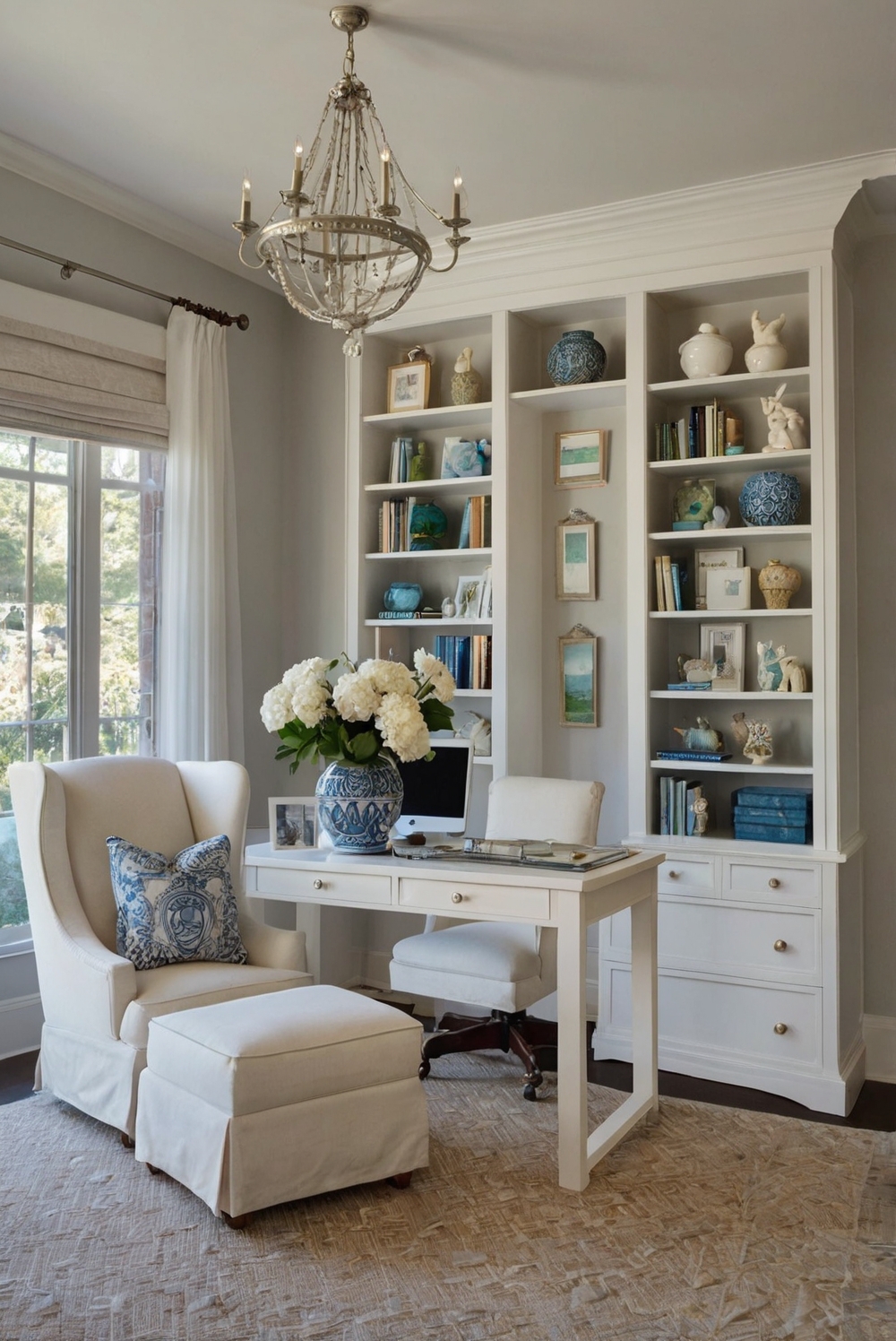How to create a cleaning supply checklist for a home office?

Discover essential steps for organizing cleaning supplies to design a productive home office. Streamline your routine with a comprehensive checklist for a clutter-free workspace.
To create a cleaning supply checklist for a home office as part of your daily routine with your home decor ideas, you should start by gathering necessary cleaning supplies such as microfiber cloths, all-purpose cleaner, glass cleaner, dusting spray, vacuum cleaner, trash bags, and disinfectant wipes. Keep these items well-organized in a designated storage space within your home office for easy access.
Incorporating cleaning the home office into your daily routine will maintain a hygienic work environment and prevent a build-up of dust and germs. Regularly wiping down surfaces, vacuuming floors, and emptying the trash can help enhance productivity and focus in your workspace. Properly organizing your cleaning supplies will make it easier to maintain a clean and organized home office.
When decorating your home interior, consider using aesthetic storage solutions such as decorative baskets or bins to store your cleaning supplies discreetly. Additionally, choose a color scheme for your home decor that complements your office space and promotes a sense of calm and focus. Making cleaning a part of your daily routine will contribute to a visually appealing and inviting home office environment.
Identify the cleaning areas:
When creating a cleaning supply checklist for a home office, the first step is to identify the different areas that need cleaning. This includes surfaces such as desks, tables, shelves, and electronics like computers, keyboards, and monitors. Make sure to also consider items like chairs, carpets, windows, and storage units. Identifying all the cleaning areas will help you determine the types of cleaning supplies you will need.
Select the appropriate cleaning supplies:
Once you have identified the cleaning areas, the next step is to select the appropriate cleaning supplies. Choose products that are safe to use on different surfaces and effective in removing dirt, dust, and germs. Some essential cleaning supplies for a home office include disinfectant wipes, glass cleaner, all-purpose cleaner, microfiber cloths, trash bags, and a vacuum cleaner. Make a list of all the supplies you need to ensure you have everything on hand.
Create a cleaning schedule:
To maintain a clean and organized home office, it’s important to establish a regular cleaning schedule. Determine how often each area needs to be cleaned based on its usage and the level of dirt and dust accumulation. For example, high-traffic areas like desks and chairs may need daily cleaning, while windows and carpets can be cleaned weekly or bi-weekly. Creating a cleaning schedule will help you stay on top of your cleaning tasks and ensure that your home office remains a comfortable and productive environment.
Organize your cleaning supplies:
To ensure easy access to your cleaning supplies and to keep your home office tidy, it’s essential to organize your cleaning supplies effectively. Consider using storage containers, shelves, or drawers to store your cleaning products neatly. Labeling containers and categorizing supplies based on their use can help you quickly locate the items you need when cleaning. By keeping your cleaning supplies organized, you can streamline the cleaning process and save time.
Maintain your cleaning checklist:
Once you have created a cleaning supply checklist for your home office, it’s essential to regularly review and update it as needed. As your cleaning needs change or new areas require attention, make adjustments to your checklist accordingly. Additionally, periodically assess the effectiveness of your cleaning routine and make changes to improve efficiency and cleanliness. By maintaining your cleaning checklist, you can ensure that your home office remains a clean and inviting space for work.
1. What essential cleaning supplies should be included in a home office checklist?
To create a comprehensive cleaning supply checklist for a home office, essential items such as disinfectant wipes, glass cleaner, microfiber cloths, trash bags, paper towels, and a handheld vacuum should be included. These supplies will help maintain a clean and organized workspace conducive to productivity.
2. How often should a home office be cleaned and restocked with supplies?
It is recommended to clean the home office at least once a week to prevent dust buildup and maintain a hygienic environment. Supplies should be restocked as needed, with a monthly inventory check to ensure nothing is running low.
3. Are there any eco-friendly cleaning supplies that can be included in a home office checklist?
Yes, eco-friendly cleaning supplies such as vinegar, baking soda, and essential oils can be great additions to a home office checklist. These natural alternatives are effective in cleaning and disinfecting without harsh chemicals, making them safe for both the environment and your health.
4. How can a cleaning schedule be incorporated into a home office checklist?
A cleaning schedule can be created by assigning specific tasks to each day of the week. For example, Mondays can be dedicated to dusting and vacuuming, while Fridays can be for organizing and restocking supplies. This will help maintain a consistent cleaning routine and ensure the office stays tidy.
5. What are some tips for organizing and storing cleaning supplies in a home office?
To keep cleaning supplies organized, consider using storage bins, baskets, or caddies to separate different items. Labeling containers can also help easily identify where each supply is stored. Additionally, designate a specific area in the office for cleaning supplies to ensure everything is easily accessible when needed.






